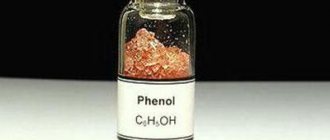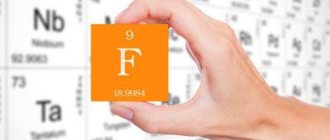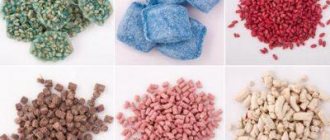Morphine is the main of the 20 alkaloids in opium: it accounts for 10% of the total mass of opiates. Contained in various types of poppy, mainly in the soporific poppy (Papaver somniferum), or opium poppy.
Source: depositphotos.com
Morphine is widely used in medicine in the form of hydrochloride (solution for subcutaneous, intramuscular, intravenous injections, administration near the dura mater) and sulfate (for oral administration). It is quickly absorbed into the systemic bloodstream and has a lasting effect within 10-20 minutes, depending on the route of administration.
The wide range of applications is due to its unique characteristics:
- inhibits the transmission of pain impulses;
- reduces the excitability of pain centers;
- has an anti-shock effect;
- neutralizes the emotional assessment of pain;
- causes euphoria, a feeling of complacency and elevated mood, regardless of actual conditions;
- in large doses it has a pronounced sedative effect.
In addition to analgesic, it provokes a number of effects on the smooth muscles of internal organs (selectively weakening or increasing tone), changes the reactivity of some regulatory centers, slows down the basal metabolism, and reduces body temperature.
Conditions for which morphine is prescribed are characterized by persistent intense pain that is not relieved by non-narcotic analgesics:
- terminal stage cancer;
- acute myocardial infarction or progressive angina;
- complicated postoperative period;
- extensive injuries;
- acute heart failure, etc.
The ability of morphine to cause a persistent state of euphoria is the reason for its use for drug intoxication. At the same time, physical and mental dependence (morphinism) quickly develops.
In Russia, morphine and its derivatives (morphine hydrochloride, morphine sulfate) are included in the list of narcotic and psychotropic drugs with controlled limited circulation. Some derivatives (benzylmorphine, hydromorphinol, desomorphine, dihydromorphine, etc.) are included in the list of prohibited narcotic substances.
The lethal dose of morphine for an adult is 0.1–0.5 g. With morphinism (drug addiction), the lethal dose increases to 3-4 g due to the development of decreased sensitivity in individuals who regularly take the drug.
How does morphine poisoning occur?
Morphine poisoning when used for therapeutic purposes occurs in the following situations:
- incorrect dosing;
- increased individual sensitivity;
- increasing the frequency of administration;
- incorrect choice of method of administering a drug of a certain concentration;
- in young children - due to the imperfection of liver enzyme systems and the possibility of developing paradoxical reactions.
In addition, acute intoxication develops in persons:
- with drug addiction due to morphine overdose;
- received the medicine by mistake;
- who took the drug for suicidal purposes.
Historical facts
Morphine was first extracted from opium in the early 19th century, but it did not become popular until mid-century. He gained general fame after the appearance of injection needles.
The scientist who studied morphine conducted tests on dogs. After they ate a portion of the drug, the dogs fell into deep sleep.
In the second half of the 19th and early 20th centuries, morphine was freely available to doctors and soldiers. This all led to the development of morphinism (morphine addiction).
In America, during the Civil War, more than 400 thousand soldiers who regularly used the drug fell ill with morphinism.
The emergence of rapid addiction and mental disorders under the influence of dope forced countries to introduce measures in the form of restricting access to morphine, banning its use and prescribing it unnecessarily.
Morphine is rarely used as a narcotic drug. It is more difficult to find on the market, and the effect is not as strong as its analogues.
Symptoms of poisoning
The main symptoms of acute intoxication are neurological disorders, respiratory depression, and cardiovascular complications.
In acute morphine poisoning, the following are observed:
- excitation followed by excessive inhibition;
- cold clammy sweat;
- pale skin;
- itching and puffiness of the face;
- increased salivation;
- fatigue, drowsiness;
- decrease in body temperature;
- dryness of the oral mucosa;
- urinary retention, constipation;
- vomit;
- hallucinations;
- increased muscle tone, up to rigidity;
- dizziness, noise, ringing in the ears;
- sharp, pinpoint constriction of the pupils, lack of reaction to light (dilated pupils during morphine poisoning indicate an incipient agonal state);
- clonic-tonic convulsions.
Morphine specifically affects the cortical centers of the brain, which causes a characteristic change in phases of the victim’s activity: excessive excitement and euphoria are replaced by lethargy, drowsiness, followed by the development of a soporous state and coma.
The development of delirious psychosis is possible - loss of orientation in time and space, coupled with hallucinations that increase arousal and provoke delusional experiences.
The most dangerous manifestation of morphine poisoning is a decrease in the sensitivity of the respiratory center to the concentration of carbon dioxide in the blood, and, as a result, its inhibition. As a result, pathological Cheyne-Stokes breathing develops, which is characterized by a violation of the depth of inspiration and expiration with periodic episodes of respiratory arrest (apoe).
The consequence of unproductive breathing is rapidly developing acute oxygen starvation of organs and tissues, acidification of the internal media of the body (acidosis). These changes lead to a sharp drop in blood pressure, which, along with the developed increase in vascular permeability, can lead to pulmonary edema.
As respiratory disorders progress, acute vascular failure (collapse, shock) develops.
Death in severe cases usually occurs within a few hours from paralysis of the respiratory center.
Treatment methods
When a patient is admitted to the hospital, the following procedures are used:
- Perform gastric lavage using a tube if it has not been performed previously. Sodium sulfate solution is also used orally and a cleansing enema is performed.
- An antidote is injected intravenously or subcutaneously. The recommended dose of Narolfin is 0.1–0.2 mg if a child under 12 months is affected. For those who are older, 0.5–1 mg is recommended for each year of life. Adults 10 mg. If the positive effect is low, the injection is repeated after 15–20 minutes.
- An oxygen cushion is used simultaneously with the introduction of Cordiamine or caffeine-sodium benzoate. Intubation or tracheotomy is possible.
- Sodium phenobarbital and chloral hydrate are used as anticonvulsants. But such a measure is indicated in the absence of respiratory depression.
- In case of a drop in blood pressure, ephedrine hydrochloride, Mezaton, is used.
- Diuretics are prescribed, and urine is removed with a catheter.
- Restore cardiac activity.
The therapy program also includes vitamins, in particular ascorbic acid and retinol acetate.
If the victim survives for at least 12 hours after poisoning, the prognosis is favorable.
First aid for morphine poisoning
First aid for acute morphine intoxication is aimed at its rapid evacuation from the gastrointestinal tract:
- Carry out gastric lavage by drinking 1-1.5 liters of warm water or a slightly pink solution of potassium permanganate, then pressing on the root of the tongue and inducing vomiting.
- Take enterosorbent (Enterosgel, Polysorb, Atoxil, Laktofiltrum).
- Take a saline laxative (Magnesium sulfate).
- If the victim has signs of clinical death (lack of consciousness, breathing, pulsation in the carotid arteries and reaction of the pupils to light), begin basic cardiopulmonary resuscitation until the ambulance arrives.
In addition, it is necessary to keep the victim conscious: lightly pat his cheeks, shout, pinch his earlobes, talk and force him to answer questions.
Taking any medications without consulting a doctor at the first aid stage is strictly contraindicated. This is due to the ability of morphine to change the strength and duration of effects and increase the toxicity of a number of drugs.
Video
Why are painkillers dangerous? The answer to this question will be given by a specialist in the next video.
Morphine is the main of the 20 alkaloids in opium: it accounts for 10% of the total mass of opiates. Contained in various types of poppy, mainly in the soporific poppy (Papaver somniferum), or opium poppy.
Morphine is widely used in medicine in the form of hydrochloride (solution for subcutaneous, intramuscular, intravenous injections, administration near the dura mater) and sulfate (for oral administration). It is quickly absorbed into the systemic bloodstream and has a lasting effect within 10-20 minutes, depending on the route of administration.
The wide range of applications is due to its unique characteristics:
- inhibits the transmission of pain impulses;
- reduces the excitability of pain centers;
- has an anti-shock effect;
- neutralizes the emotional assessment of pain;
- causes euphoria, a feeling of complacency and elevated mood, regardless of actual conditions;
- in large doses it has a pronounced sedative effect.
In addition to analgesic, it provokes a number of effects on the smooth muscles of internal organs (selectively weakening or increasing tone), changes the reactivity of some regulatory centers, slows down the basal metabolism, and reduces body temperature.
Conditions for which morphine is prescribed are characterized by persistent intense pain that is not relieved by non-narcotic analgesics:
- terminal stage cancer;
- acute myocardial infarction or progressive angina;
- complicated postoperative period;
- extensive injuries;
- acute heart failure, etc.
The ability of morphine to cause a persistent state of euphoria is the reason for its use for drug intoxication. At the same time, physical and mental dependence (morphinism) quickly develops.
In Russia, morphine and its derivatives (morphine hydrochloride, morphine sulfate) are included in the list of narcotic and psychotropic drugs with controlled limited circulation. Some derivatives (benzylmorphine, hydromorphinol, desomorphine, dihydromorphine, etc.) are included in the list of prohibited narcotic substances.
The lethal dose of morphine for an adult is 0.1–0.5 g. With morphinism (drug addiction), the lethal dose increases to 3-4 g due to the development of decreased sensitivity in individuals who regularly take the drug.
Prevention
- When taking morphine for medical reasons, do not independently adjust the frequency of administration and/or dose.
- During treatment with morphine, do not take medications that affect the central nervous system unless prescribed by a doctor.
- If side effects occur at the standard dose after the first use, immediately inform your doctor.
- If there is a patient taking morphine in the house, store the drug out of the reach of children, separately from other medicines.
Education: higher education, 2004 (State Educational Institution of Higher Professional Education “Kursk State Medical University”), specialty “General Medicine”, qualification “Doctor”. 2008-2012 – postgraduate student of the Department of Clinical Pharmacology, KSMU, Candidate of Medical Sciences (2013, specialty “pharmacology, clinical pharmacology”). 2014-2015 – professional retraining, specialty “Management in Education”, Federal State Budgetary Educational Institution of Higher Professional Education “KSU”.
Coding
There is not a single case in evidence-based medicine where coding helps with drug addiction or any other addiction.
The body requires a new dose at the level of receptors and synapses. In such matters, psychology plays a secondary role. Therefore, coding is not efficient.
There are no described techniques or methods for coding drug addicts. Only long-term rehabilitation with psychological work to restore personality and self lead to long-term and stable remission.
Appearance of the drug and in what cases it is used
Morphine is a representative of alkaloids - these are nitrogen-containing organic compounds, often of plant origin. When used regularly, alkaloids exhibit high toxicity, provoking rapid and serious addiction.
Morphine appears as a white powder with a bitter taste and neutral aroma. The substance is practically insoluble in water. It is used in the form of tablets, injection solution or powder . The tablets are taken orally, the therapeutic effect is observed after half an hour.
The solution is injected subcutaneously or intravenously; in the first case, the properties of the substance appear after 15 minutes, and in the second - after 3 minutes. The therapeutic effect lasts for 4 hours. In addition, morphine is available in the form of granules for the preparation of a suspension, capsules (regular and extended-release), and rectal suppositories.
It eliminates severe pain in cases where non-narcotic analgesics are no longer effective. The injection solution is most often used, since after its administration the therapeutic effect quickly appears.
Morphine is indicated in the following cases:
- Terminal stage of cancer , when tumor cells rapidly divide and metastases spread to neighboring organs;
- Some diseases of the cardiovascular system: myocardial infarction (acute phase), progressive angina, functional heart failure in the acute stage. Morphine relieves pain and prevents cardiogenic shock;
- Postoperative complications to eliminate severe pain;
- Extensive injuries , in which the substance helps to avoid painful shock;
- Epidural or spinal anesthesia (as an additional agent).
Morphine provokes persistent euphoria, so it is often taken for drug intoxication.
Why you can’t undergo rehabilitation at home or on an outpatient basis
Patients dependent on opiates require constant monitoring. First of all, because such a person can break down at any moment.
It is necessary to carry out psychological work with patients every day, to show that he is not alone, and there are people who are ready to help.
At home, there are many trigger factors due to which a person may look for an excuse for new use.
The main factor that does not allow quality treatment of such patients on an outpatient basis is withdrawal symptoms. It is very difficult to go through withdrawal. And in special institutions, at the moment of withdrawal, the patient is put into an artificial coma and thereby helped to survive a difficult period. After this, going into remission becomes easier.
Throughout the treatment, you need to constantly take blood tests, check the functioning of your heart and kidneys. Without this, you may miss illnesses associated with morphine use.
The effect of morphine (morphine) on the human body
Morphine is widely used in medicine due to its unique properties:
- Blocks the transmission of pain impulses;
- Reduces the threshold of excitability of pain centers;
- Demonstrates antishock effect;
- Reduces the emotional assessment of pain and reaction to it;
- Causes a feeling of bliss and elation, regardless of actual conditions;
- As the dose increases, a pronounced sedative effect appears.
The substance affects the tone of smooth muscles, selectively weakening or increasing it. Morphine helps to change the reactivity of certain regulatory centers, disrupts metabolism, and lowers body temperature.
In addition, morphine causes the following negative reactions:
- Nausea , vomiting, stool disorders (diarrhea or constipation). There is a possibility of paralytic intestinal obstruction due to impaired peristalsis;
- Depending on the dosage, the heartbeat quickens or slows down, the coronary vessels are affected, and hypotension occurs;
- Morphine disrupts the functionality of the genitourinary system, which is manifested by urinary retention, pain, and decreased libido. In addition, symptoms of existing diseases become more pronounced;
- Women are prohibited from taking the drug while pregnant. This is explained by the fact that morphine provokes severe toxicosis, affects the central nervous system of the fetus, the child is born with low weight and weakened immunity;
- Inhibits the activity of the respiratory organs;
- Morphine negatively affects the nervous system, causing hypertension, cerebrovascular accidents, delirium, etc.;
- There is a possibility of allergic reactions (from nettle fever to angioedema).
Formation of addiction
Addiction to narcotic substances is due to pathophysiological mechanisms. With the systematic use of morphine, addiction occurs, then dependence is formed and the last stage is abstinence.
Drug addiction is characterized by a dependence syndrome - an irresistible craving for a drug and the achievement of psychophysical comfort in intoxication.
Stages of drug addiction development:
- Changing reactivity is the formation of psychological addiction.
- Increasing tolerance - to achieve drug intoxication, an increase in dose is required.
- Changes in the drug effect – psychophysiological dependence is firmly formed.
- Development of abstinence during drug withdrawal (refusal, absence).
The form of drug use or the drug itself changes over time. The addict strives to achieve mental comfort in any way, so the drug is often replaced with a more “heavy” one, or taken together with another psychotropic substance.
Occasional drug use is called narcotism or periodic anesthesia. Signs of dependence may be absent or appear only slightly. Elements of mental dependence are present, but the desire to inject the drug is not all-consuming.
Pathophysiological basis of the formation of addictions /O. V. Molotkov, O. V. Khalepo.: Smolensk: SSU Publishing House, 2009. – 5 – 21 p.
According to WHO, a drug addict is a person who, in a state of intoxication, poses a threat to himself and society. An addict uses any means to acquire drugs, and therefore often commits illegal actions. A persistently formed psychophysical craving causes a painful state that changes the course of mental processes and behavioral reactions.
The major drug addiction syndrome consists of three main syndromes: changes in reactivity, the formation of mental addiction and the formation of physical cravings.
Altered reactivity syndrome
Systematic use of the drug leads to a deepening of the mechanisms of addiction.
Symptoms of altered reactivity:
- Changing the form of drug use - occasional use becomes regular. Over time, the body gets used to the drug, and use becomes forced, since a pathological craving has been formed;
- Growing tolerance: Increasing;
- Plateau;
- Fall below the initial level.
Symptoms continue to increase and transform in the following stages.
Mental dependence syndrome
Emotional balance is achieved only in intoxication. A pathological need for a drug arises to relieve discomfort. There is no withdrawal syndrome.
Symptoms of mental cravings:
- Obsessive desire is the most difficult symptom to eliminate, which even during remission is reactivated;
- Mental comfort in intoxication - obsessive thoughts about the drug appear. Without the drug, the addict feels dissatisfied.
The drug gradually becomes a part of a person’s life; without intoxication, mental well-being is unsatisfactory.
Physical dependence syndrome
Physical comfort is achieved only with drug intoxication. The attraction is compulsive. All other needs take second place (hunger, thirst). The drug is necessary to relieve psychophysical discomfort and to prevent withdrawal symptoms.
Symptoms of poisoning
Morphine poisoning during treatment occurs when there is an allergy to the substance, a violation of the dosage, or long-term use. Symptoms of poisoning appear when the wrong method of administering a solution with a certain concentration is chosen.
In addition, morphine overdose often occurs in drug users and patients who were mistakenly prescribed the drug. Sometimes a large dose of the substance is taken during a suicide attempt.
Clinical manifestations of morphine poisoning:
- Nervous excitement, which is replaced by excessive inhibition;
- Discharge of cold, sticky sweat;
- Pallor of the outer skin;
- Itching of the skin on the face, swelling;
- Excessive salivation;
- Increased fatigue;
- Decrease in temperature indicators;
- Dry mouth;
- Urinary retention, constipation;
- Eruption of vomit;
- Auditory or visual hallucinations;
- Increased muscle tone, their stable resistance to deforming forces;
- Vertigo (dizziness), hearing disorders (noise and ringing);
- Visual impairment in the form of sharp constriction of the pupils, lack of reaction to light;
- Clonic-tonic involuntary short-term contractions of skeletal muscles.
Morphine affects the center of the cerebral cortex, so the patient’s phases of activity change (from excessive excitement to inhibition). Drowsiness turns into deep depression of consciousness and coma.
When overdosing on morphine, the patient loses orientation in time and space. This condition is accompanied by hallucinations, increased nervous excitement and delusional states.
Working with codependents
People who live with a drug addict or are members of his family, having any physical or mental connection, are called codependent.
Such people can be the mainstay of recovery even for an opioid addict. But if the connection is too strong, any conflict leads to a new breakdown.
Working with such people is an important part of rehabilitation. They need to be taught how to help a patient go into remission, and taught the rules of communication and behavior with addicted people.
Codependent people at first must seek a compromise, provide physical and mental support. Such care should continue until the patient regains his social consciousness and until the drugs fade into the background.
Correct prioritization leads to more stable remission and improved relationships in the patient’s family.
First aid for intoxication
If you notice symptoms of morphine poisoning in a person, you should immediately call an ambulance. The substance can only be removed from the body in a hospital setting. Before the arrival of doctors, it is necessary to restore respiratory function, after which the activity of the cardiovascular system is normalized.
First aid for morphine poisoning involves doing the following:
- First you need to rinse the stomach with a solution of potassium permanganate (0.05%). The liquid oxidizes morphine, as a result, it is less absorbed into the bloodstream and is eliminated from the body faster;
- The victim is offered to take enterosorbents (Polysorb, Lactofiltrum, etc.). This is necessary to reduce the toxic effect of the drug.
- Magnesia is a saline laxative that helps quickly cleanse the intestines of toxins;
- It is important to maintain the condition of the victim until the ambulance arrives. To do this, you can use different methods: talking to the patient, patting him on the cheeks, etc. Otherwise, the likelihood of coma increases;
- If the patient is not breathing and there is no pulse, then artificial respiration and chest compressions should be performed immediately.
It is strongly recommended that the patient be given medications. This is due to the fact that morphine changes the toxicity of some medications, which can have dangerous consequences. The morphine antidote Nalorphine will help reduce the toxic effect of the substance. However, it is used only in hospital settings.
Medical assistance for morphine poisoning:
- 0.4 – 0.8 mg of Nalorphine is injected into the patient’s vein
- To normalize respiratory function, analeptic drugs (Etimizol) are used;
- If necessary, a complex of resuscitation measures is carried out (intubation, tracheotomy, etc.);
- Mezaton is used to lower blood pressure;
- , bladder catheterization is performed
- Atropine is used to eliminate spasm;
- Barbiturates (drugs that depress the central nervous system) are prescribed for excessive nervous excitement and convulsions;
- If coma occurs, the patient needs to be provided with rest and warmth.
The sooner the victim received qualified assistance, the greater his chances of survival. Therefore, it is recommended to hospitalize a person within 12 hours of an overdose.
Rehabilitation
Treatment of opioid addiction is one of the most difficult problems in modern addiction medicine. The essence of the problem is that such patients require constant care and monitoring. It is necessary to work with codependent people and restore the social role of the patient.
In addition, “withdrawal” always occurs, which not every patient can survive without breakdowns.
Rehabilitation from morphine should always be comprehensive. There are no single methods that cure; only a combination of techniques and the patient’s desire.
The complex of treatment for morphine addiction includes the following measures:
- detoxification of the patient using infusion;
- elimination of symptoms of organ dysfunction;
- managing the patient during withdrawal;
- work with a psychologist and psychiatrist;
- restoration of role in society;
- training and psychological preparation of codependent people.
Every person who begins treatment and his relatives must understand that it is impossible to recover from addiction. A person will periodically have desires to use the drug again. The task of specialists is to make sure that these desires appear extremely rarely and that it is easier to overcome them.
For independent rehabilitation, strong motivation and a developed volitional sphere are required; otherwise, “getting off the needle” will not work.
Consequences of morphine poisoning
Side effects after taking morphine can be easily eliminated by a doctor if the patient's condition is controlled. As mentioned, after poisoning with a substance, the functionality of the cardiovascular, respiratory and nervous systems is disrupted.
In acute morphine poisoning, the likelihood of the following complications increases:
- Stopping breathing due to paralysis of the respiratory muscles;
- Increased volume of brain tissue;
- Secondary infection of the respiratory organs;
- Coma and likelihood of death.
However, even after medical care there is no guarantee that the functionality of the lungs and brain will be restored. The prognosis is good if the victim is hospitalized before he loses consciousness.
With chronic intoxication (frequent use in small doses), the following disorders occur:
- Insomnia, hallucinations; You might be interested.
How does consuming nasvay affect the human body? - Restlessness, anxiety;
- Excessive excitement gives way to sudden relaxation;
- Urinary problems;
- Weak potency in men;
- Allergies (skin manifestations and respiratory disorders);
- Excessive sweating;
- Anemia (anemia);
- Systematic fatigue, indifference to everything around;
- Cramps in the stomach;
- Periodic twitching of muscles of different localization.
In addition, the patient's immunity decreases and the likelihood of infectious diseases increases. Digestive disorders occur, and in advanced cases, intestinal patency is disrupted.
The patient's condition worsens when he takes certain medications along with morphine. The alkaloid is not recommended to be combined with sedatives and hypnotics, as it enhances their effect. When morphine is combined with ethyl alcohol and muscle relaxants, breathing is depressed. Morphine provokes central nervous system disorders when taken simultaneously with beta-blockers.
Side effects
Side effects affect all organs and systems.
Digestive tract
To begin with, the digestive tract suffers, the following appear:
- nausea and vomiting
- constipation
- bile stagnation
- stomach pain
- intestinal atony
- liver toxicity
Heart
A negative effect on the heart is accompanied by:
- drop in blood pressure
- tachycardia
CNS
The CNS notes:
- depression
- irritability
- limb tremors
- headache
- weakness, dizziness
- increased intracranial pressure
Genitourinary system
The following side effects occur from the genitourinary system:
- ureteral spasms
- decreased daily diuresis
- erectile disfunction
- decreased sexual desire
In addition to all this, side effects include allergies and vision problems.










